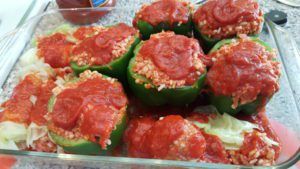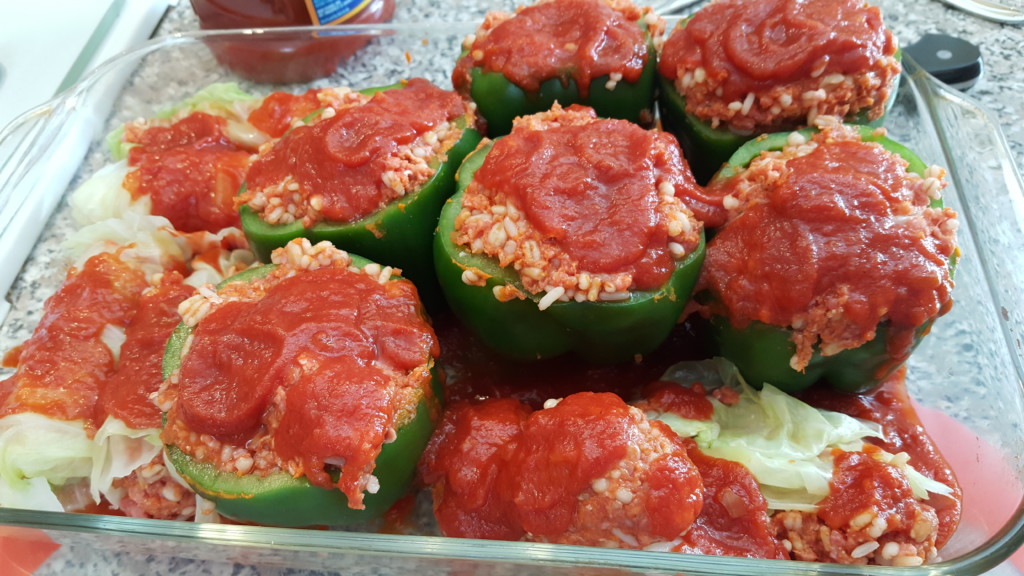Let’s face it… stay at home parenting (and being a babysitter) can be a boring job after a while. There is only so much Mickey Mouse a grown person can tolerate, and then cooking wine becomes a cocktail. One has to find something to do to pass the time while teaching the children the importance of independent play. Cleaning, laundry and stuff like that is physical and can be exhausting and requires constant repeating. So, I tend to focus on the one thing that I know can make or break an evening… dinner.
Yes, breakfast is the most important meal of the day, as we have heard our whole lives. Yes, lunch is an under-appreciated break to refuel which is often forgotten. But dinner (or “supper” if you still eat at Grandma’s) is where the day recaps, time unwinds and everyone comes together to eat comforting food and bring about good feelings for the night. It is a staple routine to many families, and for working parents, this is often the only time they have to spend all together throughout the course of a regular day.
Happiness comes from the people who surround the table. But, satisfaction comes from what served on the table. And, again, a lot of working parents do not have the convenience, or the extra time, or energy, to plan and cook a full dinner 7 nights a week.
So, I’m already there… watching the kids, and the dog. I have to feed them anyway, right? Why not throw on some music and start cooking?
Now, I’m going to teach you my system for cooking for working families of four or more, use it wisely.
Part one: Plan to plan, after you shop. What? Ok – Yes, you are still going to make your grocery lists, clip coupons, follow sales and buy bulk. All of those methods are tried and true. But you are also going to stock up when prices are good, and impulse buy. You are going to buy produce and other perishable foods that may not get used before they begin to turn. It just happens, so make the most of it. Make sure to have a variety of spices, and dry foods like beans, grains, rice and dehydrated potato flakes. Keep stock of weird things you don’t use often like vinegars, oils, wines and juices, and have more than one kind of each. These can help change the flavor of your meal when you are dealing with limited food choices. Keep a stocked baker’s cupboard with flour (or gluten free rice or potato flour), cornstarch, baking soda, baking powder, salt, cinnamon, pure vanilla extract, and other baking staples your family might like. When you go recipe searching, you will be thankful you have these oddities on hand. And don’t worry, you WILL find a use for it.
Eat seasonally. Buy produce that is ripe and in season. Meats also go in and out of season; be sure to monitor sales on family packs and large cuts of meat.
TIP: If something “freezes beautifully” (thank you, Steel Magnolias), and you have the freezer storage space, do NOT be afraid to buy foods in larger amounts. Just make sure to properly prepare the foods for freezing to avoid freezer burn and food waste. Not sure if you can freeze a food? Google it. It’s why it’s there.
That being said, your shopping trip should be plentiful, and you should have all the ingredients you need or want for the next week, or more.
Part two: actually planning after the shopping. I shop for myself and my family. And, occasionally I grab things I know my “other family” would enjoy. Don’t forget, I’m Aunt Carri. I take some ingredients to work with me, and combine the food there to make several meals at once. This is something you can do with another family, extended family, neighbors or friends. You can organize your own neighborhood meal sharing program.
How do you know what to cook? Start with the fridge. Look to see what needs condensed from serving dishes into portable containers. Bad food needs thrown away. Food that is starting to show its age needs used immediately, or if it’s safe to freeze you can still do that, to avoid waste. Gather all ingredients that need used right away, and decide how it can be used to create more than one meal, if possible. Produce, dairy and meats are a priority.

Here is today’s example. I had a head of cabbage and 6 bell peppers. I decided to stuff them with ground meat, but instead of using rice as the filler, I used quinoa and barley. It’s something different, and just a bit healthier. There are only a few large leaves of the cabbage that can be used to wrap a pig into the blanket comfortably. What to do with the rest of the chunky cabbage? I grabbed some noodles and butter and made haluski. Right there, without even really trying… 3 meal choices! I have several more examples, but I’m running out of space…
After the meals are cooked, fill reusable containers making full size meals for later, before serving dinner to the family. This way the portions are rationed before everyone digs in and overeats. They can be used as lunches, or dinner later on in the week. They can also be frozen… DIY TV Dinners!
Making multiple meals at once is not as overwhelming as it sounds. Work with what you have, but change up the recipes to offer a variety in the menu. Find out what your family likes and make it a regular dish biweekly to avoid getting sick of eating it. And, try to incorporate one new recipe weekly.
To bring this whole blog full circle, my point is this… time is short, food is expensive… maximize your resources. So, in addition to your healthy breakfast, enjoy your lunch of leftover dinner, and have another dinner when you get home.
Be Merry.















